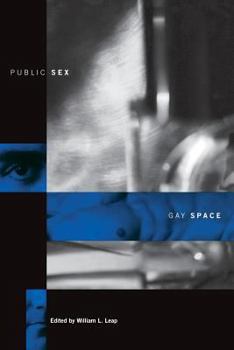Public Sex/Gay Space
(Part of the Between Men-Between Women: Lesbian and Gay Studies Series)
Select Format
Select Condition 
Book Overview
Male homosexual activity in public and semipublic locations is a central but seldom explored dimension of gay culture around the world. The majority of existing research emphasizes the impersonality of such erotic interaction and underscores the element of danger involved. While never denying the danger of anonymous public sex in the age of AIDS, the contributors to Public Sex/Gay Space go beyond narrow moralisms about the need to regulate unsafe sexual practices to discuss the significance of sex in public. William Leap has brought together contributions from such fields as anthropology, sociology, literary criticism, and history to reinvigorate the discussion on this issue, with twelve essays providing a more nuanced portrait of why public sexual activity is such an integral part of gay culture. The authors present rich ethnographic snapshots of male sex in public places--many drawn from interviews with participants or, in some instances, the authors' personal experiences.Contributors investigate a broad cultural spectrum of gay sexual space and activity: in a public park in contemporary Hanoi, at the beachfront community of New York's Fire Island, and in nineteenth-century Amsterdam, for example. They explore issues such as visibility and secrecy, as well as economic status and social class, and interrogate the historical trajectories through which certain locations come to be favored sites for sexual encounters. Together, they offer insight into the ways in which public sex calls into question the very line that divides "public" from "private."
Format:Paperback
Language:English
ISBN:0231106912
ISBN13:9780231106917
Release Date:December 1998
Publisher:Columbia University Press
Length:304 Pages
Weight:0.90 lbs.
Dimensions:0.7" x 6.0" x 9.1"
Grade Range:Postsecondary and higher
Customer Reviews
1 rating
Somewhat uneven, but important multidiscplinary perspective
Published by Thriftbooks.com User , 26 years ago
The most important lesson from this book is that there is no such thing as "privacy" for gay sex.A few chapters are mystifying (Hollister's and Lane') but there are fascinating chapters on cruising in Hanoi (Aaronson), straight-identified men's wider conception of "private" than gay men's (Leap), historical explorations of 19th-century Netherlands (van der Meer)and 1950s Montrel (Higgins), and -- far and away the most graphic -- Stephen Murray's demonstration that gay men differ in their responses to and valuations of being observed having sex.






